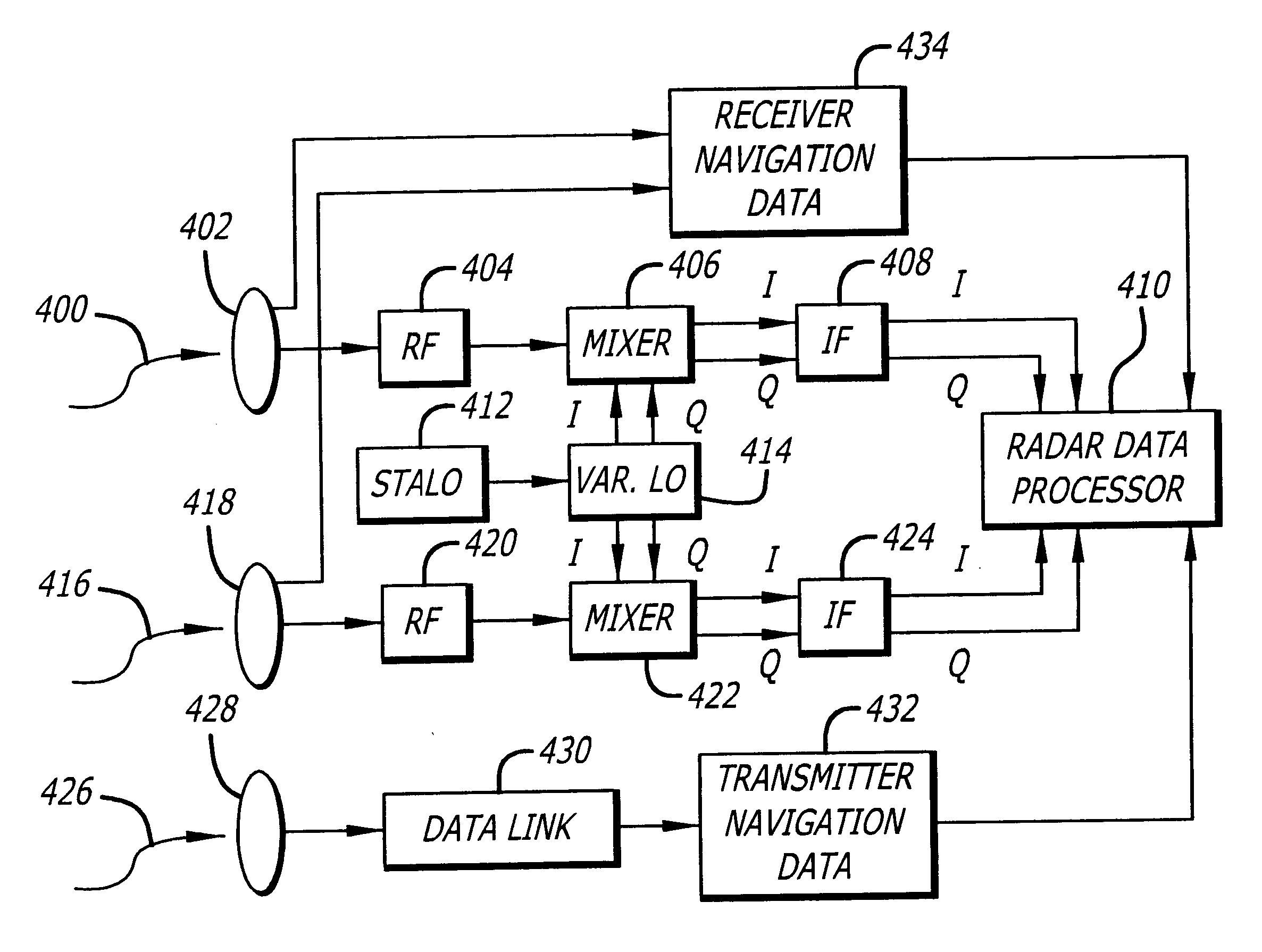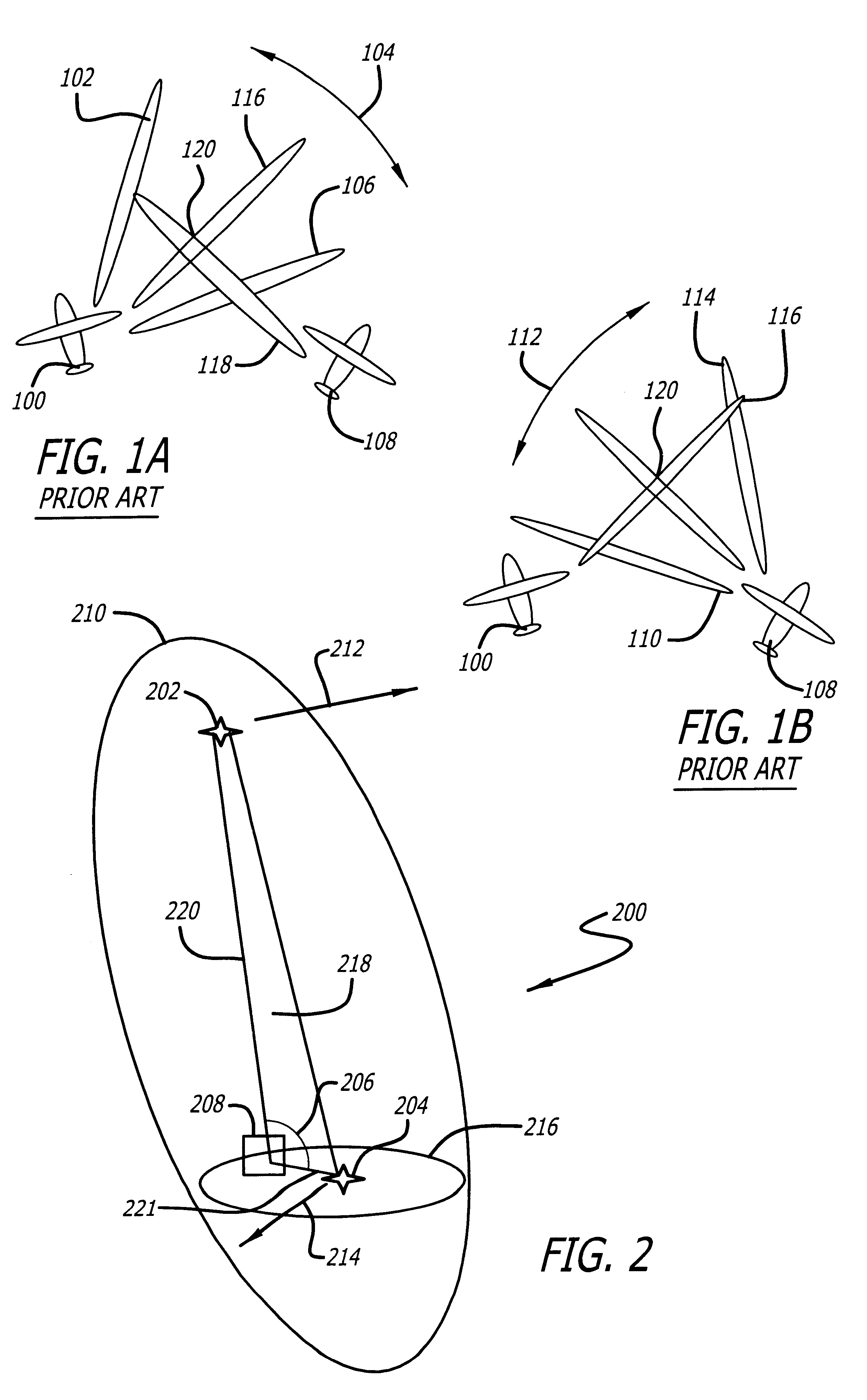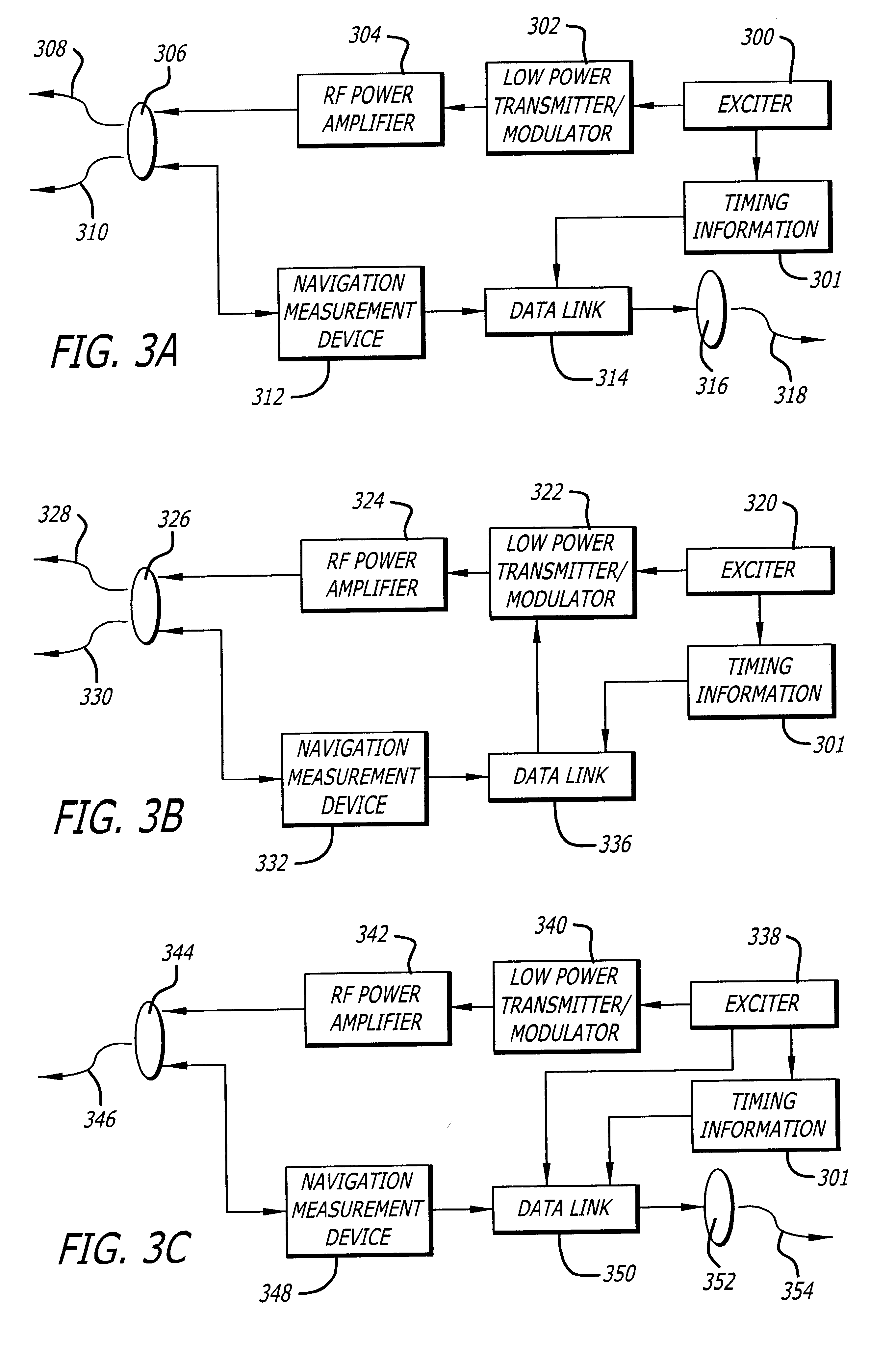Bistatic radar system using transmitters in mid-earth orbit
a radar system and transmitter technology, applied in the field of radar systems, can solve the problems of limited operational flexibility, large illumination intensity of the target, and significant constraints on the system, and achieve the effect of sufficiently large illumination intensity for detection
- Summary
- Abstract
- Description
- Claims
- Application Information
AI Technical Summary
Problems solved by technology
Method used
Image
Examples
Embodiment Construction
While the present invention is described herein with reference to illustrative embodiments for particular applications, it should be understood that the invention is not limited thereto. Those having ordinary skill in the art and access to the teachings provided herein will recognize additional modifications, applications, and embodiments within the scope thereof and additional fields in which the present invention would be of significant utility.
FIG. 2 is an illustrative embodiment of a bistatic radar architecture 200 implemented in accordance with the teachings of the present invention. In FIG. 2, a transmitter 202 and a receiver 204 are shown. In the illustrative embodiment, the transmitter 202 is located at Middle Earth Orbit (MEO); however, the transmitter may be located anywhere between Lower Earth Orbit (LEO) and Geo-synchronous Orbit (GEO). In the present embodiment, the selection of useful orbits depends on (approximately) matching the velocity-to-range ratio (V.sub.T / R.su...
PUM
 Login to View More
Login to View More Abstract
Description
Claims
Application Information
 Login to View More
Login to View More - R&D
- Intellectual Property
- Life Sciences
- Materials
- Tech Scout
- Unparalleled Data Quality
- Higher Quality Content
- 60% Fewer Hallucinations
Browse by: Latest US Patents, China's latest patents, Technical Efficacy Thesaurus, Application Domain, Technology Topic, Popular Technical Reports.
© 2025 PatSnap. All rights reserved.Legal|Privacy policy|Modern Slavery Act Transparency Statement|Sitemap|About US| Contact US: help@patsnap.com



